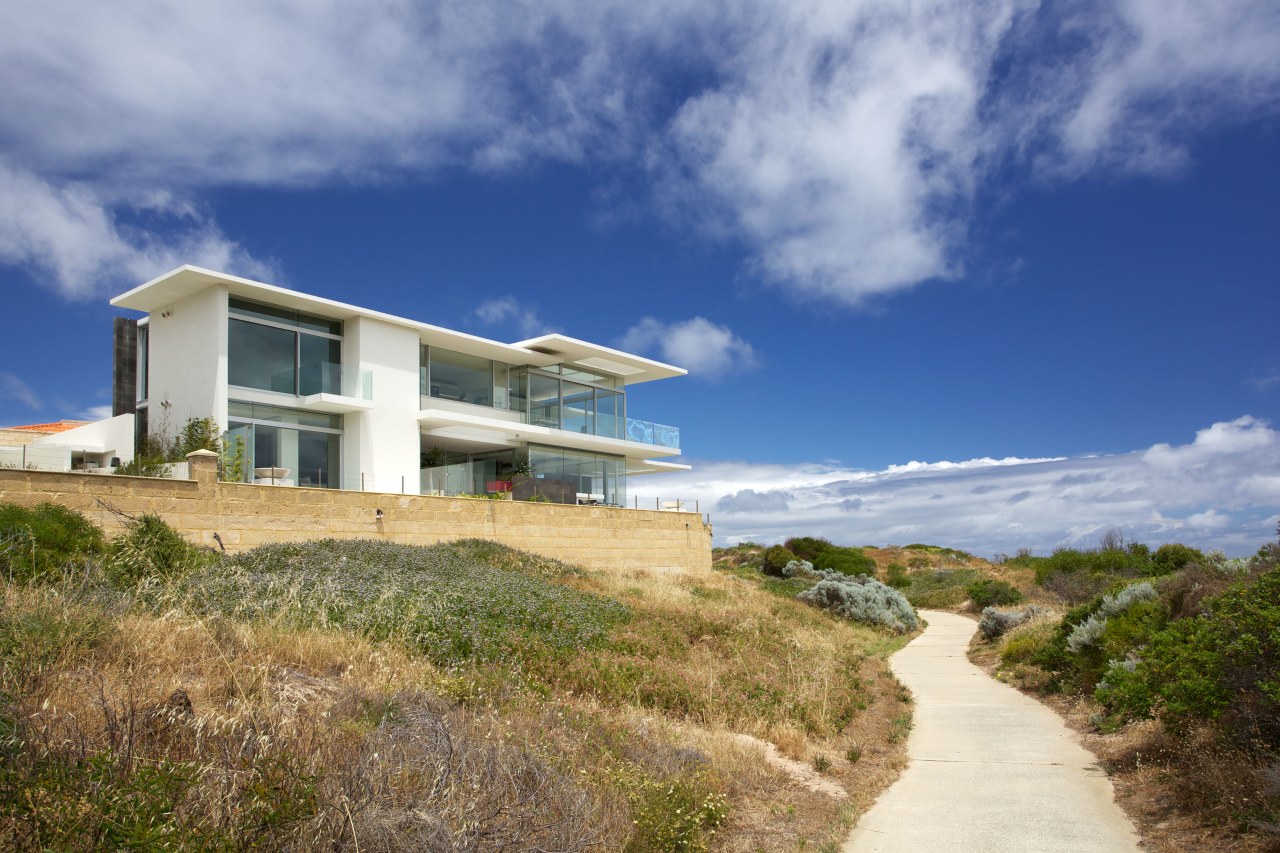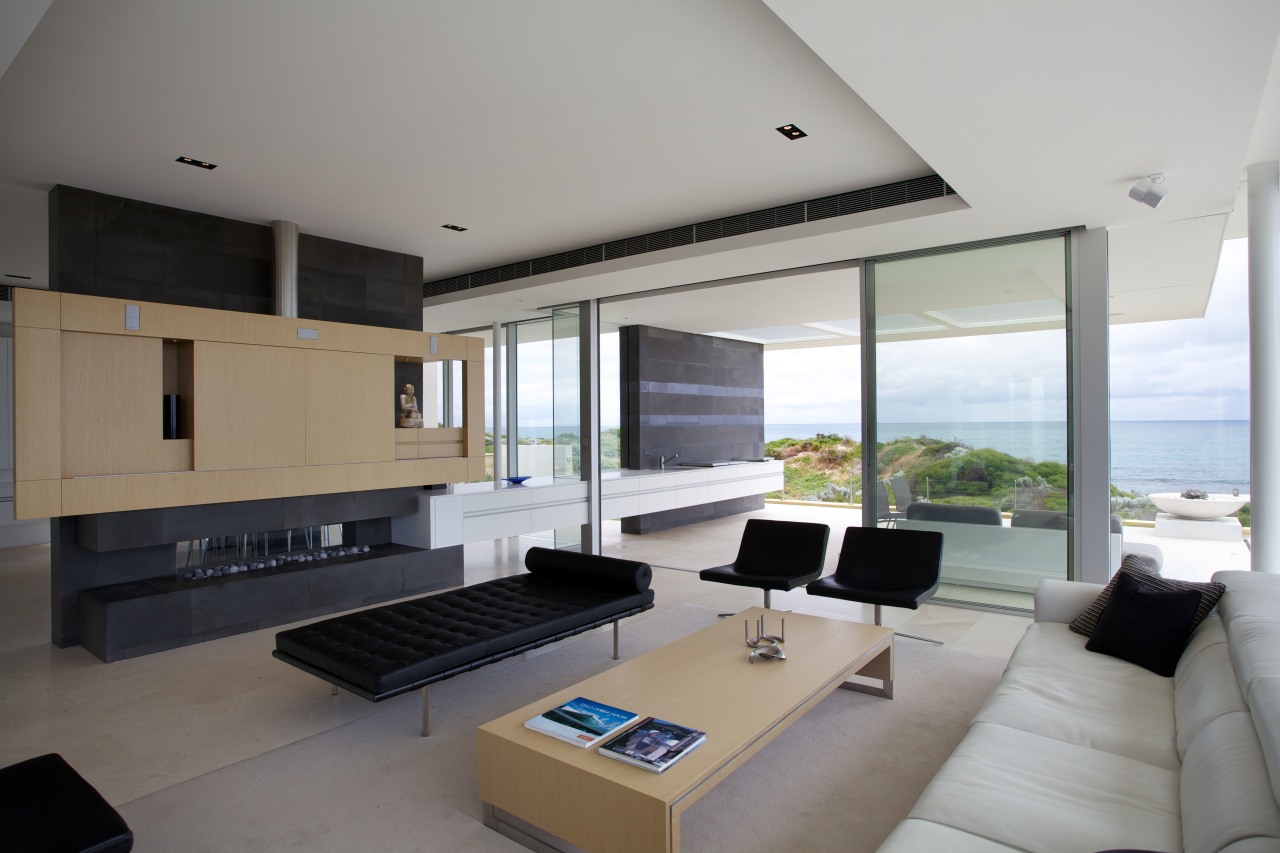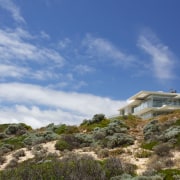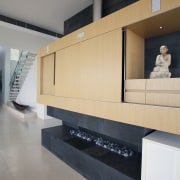Coastal home with large roof overhangs and protected limestone tile terraces provides all-weather outdoor living spaces
Beach home on north-facing site designed to maximise the views and indoor-outdoor living by architect Gary Banham

While oceanside building sites have the obvious attractions of great views and access to the beach, they can also present specific design challenges. Architect Gary Banham says that's particularly so along the Western Australia coastline.
"There are blustering southwesterlies in the winter and afternoon sea breezes in the summer," he says. "Plus you have to have shelter from the sun and allow for the sunsets over the Indian Ocean."
So when he came across a site south of Perth several years ago, he realised he'd stumbled across one of the best beachfront locations in the region.
It sat on a promontory immediately in front of the sand dunes, with 270° ocean views. But its unusual north-facing aspect meant the house could be designed to make the most of those views without being fully exposed to prevailing winds.
"There were also advantages with the orientation for the sun," says Banham. "Our winters can be quite cool, but the lower winter sun can penetrate into a house if it faces north."
However, for much of the year the interiors and outdoor living areas had to be shaded from the sun.
"We needed extensive overhangs, so we used the roof and balconies to give protection," says Banham. "We've tapered the steel beams to cantilever the overhangs and clad them with Scyon."

These roof planes became the driving force behind the design, penetrating the interiors to form bulkheads. They also tie the house to the view, with the prominent line of the horizon in the distance.
The strong horizontal planes in white contrast with the vertical support elements clad in dark basalt stone. These form a central spine through the house, starting at the front exterior, penetrating into the entrance way, through the living spaces and out to a west-facing outdoor entertaining and cooking area.
In the living area, this vertical element houses a central fireplace and divides the seating and dining areas. As seen elsewhere in the house, associated cabinetry is designed to give the sense of floating.
"I tried not to have cabinetwork touch the floor," says Banham. "I wanted to have it cantilever as much as I could, like the balconies and roof line."
The west outdoor area is covered by a six-metre cantilevered roof, including operable louvres. However, this alone doesn't provide enough protection from the prevailing winds.
For that, the architect created an even more sheltered area on the north face of the building. Referred to as the atrium, this inset terrace is glazed on three sides.
Bifolding doors can be opened up all round to give a completely protected indoor-outdoor space, Banham says.

"It's possible to sit there with candles lit on the table even when there's quite a wind blowing from the west."
This seamless flow from indoors to outdoors is enhanced by using frameless glass doors to open to the entertaining areas and the limestone tiles used on the interior floors and on the terraces.
The upper level of the two-storey home contains a well-equipped home studio, a retreat area, guest bed and bath and the main bed and bath.
For Gary Banham, this house by the ocean is the culmination of a lifetime designing homes. For this one, he also had the luxury of time to perfect the design.
"I worked on the ideas with my son Steeg for several years making models, discussing and making changes," he says.
"That's meant we've made the right decisions architecturally and aesthetically. I couldn't say there's anything I would consider as being a mistake."
Credit list
Architect
Cladding
Paint
Heating
Speakers
Pool
Kitchen and bathroom design
Benchtops
Sink
Builder
Roof
Wallcoverings
Lighting
TV
Control systems
Outdoor furniture
Kitchen manufacturer
Splashback
Appliances
Story by: Paul Taylor
Home kitchen bathroom commercial design
Classic looks, contemporary efficiency
Diving into nature
Personality plus
Home Trends Vol. 31/1
myTrends Home brings you the best homes, kitchens and bathrooms, both local and international. Each issue is packed with...
Read More












